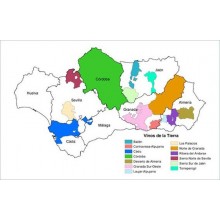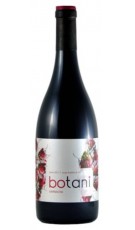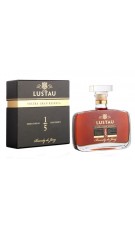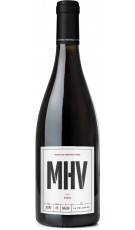
Andalucía There are 88 products.
Andalucía
Andalucía posee una tradición milenaria en el cultivo de la vid y en la elaboración de vinos de gran prestigio y fama en todo el mundo. Los siglos XVI y XVII, gracias al auge del comercio mar&iacut...
Catalog
-
Valdespino Fino Inocente
Vino generoso.Jerez-Xérès-Sherry y ManzanillaOne of the greatest wines of this country is a Fino, it is made with must from one of the best limestone vineyards in the world and is called Inocente. But, as it is a Jerez and costs a few euros,...
Reduced price! -
Amontillado Carlos VII
Amontillado wine.BODEGAS ALVEARMontilla MorilesVery old fine, aged by biological aging (under flor veil), continuing its production in oxidative aging (without flor veil), in American oak casks, through the traditional system of criaderas and...
-
Don Zoilo Palo Cortado
Palo cortado.WILLIAMS & HUMBERTJerez-Xérès-Sherry y ManzanillaQuality Liqueur Wine Produced in a Specific Region, in Spain, fortified wine with Designation of Origin Jerez - Xérès - Sherry, and indication of age, 15 years. Palo cortado.
-
Don Px Cosecha 1999
Natural Sweet Wine.TORO ALBALÁMontilla MorilesThis 1999 Gran Reserva is an elegant wine, made with Pedro Ximénez grapes picked in mid-August and laid out in the sun for between 7 and 9 days to concentrate all their sugars. After...
In stock -
Brandy de Jerez Solera Gran...
Brandy.BODEGAS LUSTAUJerez-Xérès-Sherry y ManzanillaThis Brandy has its origins in a small Solera that the Lustau family set aside for their consumption and that of their circle of friends. Before aging this unique limited edition Brandy, these...
-
Vermut La Janda
Vermouth.ÁLVARO DOMECQJerez-Xérès-Sherry y ManzanillaLa Janda Vermouth combines the delicious intensity of Oloroso wine with a touch of sweetness from the Pedro Ximénez variety, and a delicious bitter finish with a hint of herbs and botanicals native...
In stock -
Don Px Cosecha 2002
Natural Sweet Wine.TORO ALBALÁMontilla MorilesDon Px Harvest 2002, almost three kilos of grapes are needed to obtain a liter of this wine. Once pressed, it is alcoholized up to 9% vol. and remains in a stainless steel tank for 12 months. After...
-
MHV Serie 04 2015
Rd Wine CrianzaFINCA LA MELONERAMálaga y Sierras de MálagaRed Wine Crianza, 6 months in concrete eggs
-
Alvear Fino Capataz Solera...
White wine.BODEGAS ALVEARMontilla MorilesMade from the Pedro Ximénez grape, this wine comes from the solera with the most aging of the "finos" of the Alvear family which, after undergoing biological aging for 12 years, still keeps...
-
La Saca – Palo Cortado...
Generous Dry Palo Cortado.BODEGAS ALTANZAJerez-Xérès-Sherry y ManzanillaA mysterious origin that is revealed as a unique discovery. A Centenary Solera that leads to exceptional finesse. A Palo Cortado that is distinguished by its harmony and elegance. Palo Cortado with...
-
Manzanilla Papirusa
ManzanillaBODEGAS LUSTAUJerez-Xérès-Sherry y ManzanillaVino Generoso, Manzanilla

Andalucía
Andalucía posee una tradición milenaria en el cultivo de la vid y en la elaboración de vinos de gran prestigio y fama en todo el mundo. Los siglos XVI y XVII, gracias al auge del comercio marítimo, fueron una época de especial florecimiento. La topografía, geología y clima de los suelos andaluces resultan excelentes para el cultivo de la vid. El clima Mediterráneo y los diferentes microclimas, las suaves temperaturas medias (16ºC), la escasez de heladas y granizos, las numerosas horas de sol al año, un fuerte contraste altitudinal y el sistema de crianza, crean caldos de gran calidad, a la par que muy variados y característicos. Esta tendencia a una producción de prestigio se ha perpetuado hasta la actualidad. Más del 70% de los viñedos andaluces están amparados por alguna de las seis Denominaciones de Origen establecidas y auspiciadas por sus respectivos Consejos Reguladores: Condado de Huelva (1933), Jerez-Xérès-Sherry (1933), Manzanilla de Sanlúcar (1964), Málaga (1933), Sierras de Málaga (2001) y Montilla-Moriles (1985). A estas denominaciones se suman 13 indicaciones geográficas protegidas (Vinos de la Tierra) y otros vinos históricos no amparados pero que gozan de gran popularidad, tales como la Tintilla de Rota, el Pajarete y el Moscatel de Chipiona, Mosto del Aljarafe...En torno a todos estos caldos se ha configurado toda una Cultura del Vino en la que se engloban bodegas, museos especializados, fiestas tradicionales...
Localización
Más del 70% de los viñedos andaluces están amparados por alguna de las seis Denominaciones de Origen establecidas y auspiciadas por sus respectivos Consejos Reguladores: Condado de Huelva (1933), Jerez-Xérès-Sherry (1933), Manzanilla de Sanlúcar (1964), Málaga (1933), Sierras de Málaga (2001) y Montilla-Moriles (1985).

(+34) 91 129 11 11
(+34) 638 458 218
- Brandy
- Cognac
- Gin Premium
- Ron
- Whisky
- Denomination of Origin
- Winery






























